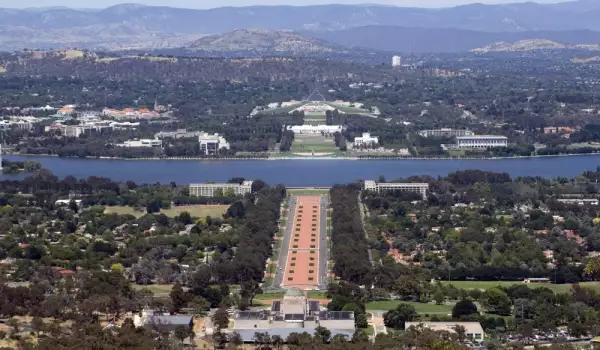Canberra

Canberra is the capital of Australia. The city has a population of about 358 000 people. The city was chosen as the capital in 1908, as for this honor were also struggling Sydney and Melbourne.
Unlike other Australian cities Canberra is a planned city. In 1913 drawings of the architects from Chicago, Walter Burley Griffin and Marion Mahony Griffin won the competition to design the city. Griffin's plan was based on geometric shapes such as circles, triangles and octagons.

The design of the city includes significant areas of natural vegetation that have earned Canberra the nickname of the "bush capital". Growth and development of Canberra were hindered by the two world wars and the Great Depression, which exacerbated a series of disputes over planning and inefficient management bodies that monitor the development of the city.
The capital of the country is well developed after the Second World War. The city's development was supported by Prime Minister Robert Menzies.
As the seat of government of Australia, Canberra is the city where the building of Parliament stands, as well as the Supreme Court and several state departments and agencies.
In the city there are many social and cultural institutions of national importance, such as the Australian war memorial, Australian National University, Australian Institute of Sport, National Gallery, National Museum and National Library. Australian army officers are trained at the Royal Military College. Australian Academy of the Defense Force is also located in the capital.

Since the city has a high proportion of civil servants, the federal government contributes the largest percentage of gross state product and is the largest employer in Canberra. The city is the seat of government and the unemployment rate is low and average income is higher than the average income for the country.
The name derives from the word Canberry, which meant "meeting place" in the language of the tribe Ngabri. Before Europeans appear in Canberra, the area was inhabited by indigenous Australians. Archaeological evidence for the everyday life of the people was found- rock paintings and engravings, stone tools. Evidence suggests that the site was inhabited by humans for at least 21, 000 years.
European settlement in Canberra began in the twenties of the nineteenth century. During 1820-1824 there were four expeditions. In 1826 Joshua John Moore bought a place called Canberra, and was known among the local population. In the nineteenth century the population of Canberra grew slowly. The oldest surviving public building from that time is the Anglican Church of St John the Baptist, which was erected in 1845. In the churchyard are the oldest graves of Europeans in the area.
In March 1913 the city officially received its name from Lady Denman, wife of Governor Lord Denman, at a ceremony. In the thirties were chosen projects to adopt an urban plan of the city. Some of the projects, such as a Roman Catholic cathedral and Anglican cathedral remained unfinished.
In the mid-twentieth century the population grew by more than fifty percent in a five years period from 1955 to 1975. After the war, several government departments were moved from Melbourne to Canberra.
In January 2003 parts of Canberra were destroyed by forest fires that killed four people and injured four hundred thirty-five and destroyed over four hundred houses.







